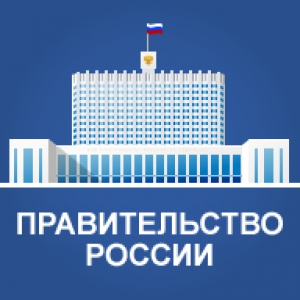Experts named bottlenecks in economic cooperation between Russia and China

The Ukrainian conflict and the aggravation of contradictions between Russia and the "global West" led by the United States had a decisive influence on the development of Russian-Chinese relations in almost all areas. it can be called positive, point out the authors of the report “Russian-Chinese Dialogue: Model 2023” (available to RBC), prepared by the Russian International Affairs Council, the Institute of China and Modern Asia of the Russian Academy of Sciences and the Institute of International Studies of Fudan University in Shanghai.
Bottlenecks in economic cooperation
In the report, covering the period from the second quarter of 2022 to the first quarter of 2023, experts analyze the development of economic relations between Russia and China and note that it was they who had to experience the most serious challenges. The sanctions imposed against Russia led to a reassessment of the risks of bilateral financial, trade and economic cooperation. “In the spring of 2022, many analysts believed that the development of trade and investment cooperation between the two countries had stopped, and the Chinese authorities and businessdo not dare to enter into long-term investment or trade contracts for fear of secondary sanctions,” experts remind. Nevertheless, since the fall of 2022, “Chinese industrial goods and components began to occupy numerous niches in the Russian market, vacated as a result of the withdrawal of Western companies.” “It can be stated that Russian-Chinese relations have fully withstood all the tests of this difficult year. Moreover, they entered 2023 stronger, demonstrating development dynamics that have no analogues in recent history,” the document says.
According to the data provided in the report, in 2022 the trade turnover between Russia and China amounted to $190.27 billion, an increase of 29.3% compared to 2021. Due to the growth in energy supplies, which accounted for 75% of the total nomenclature list, Russia's exports to China reached $114.15 billion, and China's exports to Russia - $76.12 billion, which is 43.4% and 12.8% more than in 2021 respectively. The volume of Russian exports to China exceeded Chinese imports by one and a half times. According to Chinese statistics, Russia's share in the country's foreign trade increased by 0.9%, from 2.4% in 2021 to 3.3% in 2022.
While trade between Russia and China is at record levels, the bottlenecks and barriers that hinder the effective development of bilateral cooperation in the long term cannot be ignored, experts say. They name four obstacles, the main of which is a sharp increase in China's trade deficit. If in 2018-2021, according to the General Administration of Customs of China, the annual trade deficit with Russia was at the level of $11-12 billion, then in 2022 it increased to $38 billion, or 20% of the total bilateral trade ($190.2 billion). Such a sharp jump negatively affects the quality of trade and its development. The second obstacle is the increase in the number of trade barriers from Moscow, associated with countering sanctions and protecting the interests of national producers, including an increase in EXPORT duties and restrictions on exports. “Third, in response to US and European financial sanctions, Russianthe government switched to a new procedure for payments in rubles, and these measures affected the interests of Chinese companies operating in Russia. Some enterprises cannot fulfill their obligations under loans in banks of the EU countries, in addition, Chinese companies that have invested in Russia through third countries cannot profit from their investments, since a number of such countries are on the Russian list of unfriendly states, ”says in the report. Experts name the fourth problem logistical difficulties.
Risks of further development of bilateral trade
Speaking about the further development of Russian-Chinese economic relations, the authors identify three factors that may influence them: negative trends in the global economy and possible problems of the Russian economy, which may affect domestic demand; unpredictability of energy prices and possible secondary US and EU sanctions. To promote the development of economic partnership, experts propose to strengthen coordination between the departments of the two countries. “Promising areas of cooperation include minimizing the negative effects of Western sanctions, intensifying efforts to prevent compliance risks and protect the interests of Russian and Chinese enterprises in the face of external economic restrictions, reducing institutional barriers to settlements in national currencies and removing trade barriers,” they write.
Read PIONERPRODUKT .by A strict diet and a solarium will not cure skin inflammation. What doctors advise “They can destroy human civilization” - Yuval Harari on neural networks How companies can legally reduce the tax burden See you in 2130: how the HEAD of Insilico intends to live up to 150 yearsThe authors of the report also point out the need to create an infrastructure for conducting transactions bypassing the SWIFT system and developing a strategy to overcome imbalances in trade. “In the context of deepening cooperation, high-tech categories of goods prevail in Chinese exports, while Russian exports are represented mainly by agricultural products and energy resources, which in the medium term reduces the benefits of cooperation for the Chinese side,” they explain.
“Russian-Chinese trade is relatively balanced. We have years when there is a slight bias in our favor, and sometimes when in their favor. The disproportion is related to the structure of Russian exports to China, but the same problems are typical for Russian exports to the rest of the world (the predominance of energy carriers). The structure can be improved due to the share of agricultural products and other non-energy products and by working on further opening the Chinese market for exports of industrial products from Russia,” Vasily Kashin, DIRECTOR of the HSE Center for Comprehensive European and International Studies, commented to RBC. He added that despite the fact that Russiaand China increased the share of national currencies in mutual settlements to 70%, Chinese banks are still afraid of falling under secondary US sanctions and are characterized by overcompliance when they refuse to open accounts for all Russian companies, and not just those on the sanctions lists. “This needs to be overcome, it is necessary to build an infrastructure independent of the West. The problems of settlements between large companies are being solved, but big problems remain for medium-sized businesses,” the expert explained.
Kashin also noted that the interdepartmental dialogue between Russia and China has been developed, contacts have been established between all major departments, including economic ones, and a mechanism of five intergovernmental commissions is in operation. “There are many mechanisms. There is a question of how they are coordinated with each other and whether it is always possible to establish a good exchange of information,” he stated. In general, according to the expert, Moscow and Beijing first of all need to work on opening markets. He considers the lack of Russian infrastructure in the eastern direction to be a key constraint in trade and economic cooperation. “The railway network is overloaded with export cargo to China, not all shippers can send their cargo. There is a shortage of maritime transport capacities due to the imposed sanctions, there is not enough pipeline infrastructure.
Read together with it:
- Парагвай: Экспорт субпродуктов является растущей отраслью и уже достиг 95,4 млн долларов СШАЭкспорт говяжьих субпродуктов в этом году значительно вырос. К концу августа выручка составила 95,4 млн долларов США по сравнению с 54,6 млн долларов США на тот же конец прошлого года. По данным SENACSA, в конце августа этого года было экспортировано 51 миллион килограммов мяса по сравнению с 33,7 миллиона килограммов на конец того же месяца прошлого года. Экспорт субпродуктов увеличился на 51,3%....
- Новые горизонты сотрудничества: Россия и Аргентина обсуждают совместный доступ на рынки продукции животного происхожденияОдной из ключевых тем конференции стал контроль за производством ветеринарных препаратов в Аргентине. Аргентинская сторона представила свою систему контроля, включающую Управление ветеринарных продуктов и Управление лабораторий животных. Эти организации обеспечивают высокие стандарты безопасности, так как каждая производственная единица подвергается проверкам каждые 3-5 лет и зарегистрирована в ин...
- Министерство сельского хозяйства США представило план по снижению цен на говядинуПоголовье скота в стране находится на самом низком уровне за последние 75 лет, в то время как спрос на говядину вырос на 9% за последнее десятилетие. Поскольку увеличение поголовья скота в стране требует времени, Министерство сельского хозяйства США (USDA) уже сейчас инвестирует средства, чтобы сделать эти рынки менее волатильными для скотоводов в долгосрочной перспективе и более доступными для по...
- С января по июль экспорт свинины из ЕС вырос на 1,6%На втором месте оказались Нидерланды с объёмом экспорта в 392 000 тонн. Дания экспортировала свинину в третьи страны с объёмом в 308 000 тонн, что примерно на 13% меньше, чем в предыдущем году. Германия экспортировала 180 000 тонн, что на 18% меньше, чем годом ранее. Это было обусловлено, главным образом, дополнительными ограничениями на экспорт, вызванными вспышкой ящура в начале года. Помимо зап...





























































